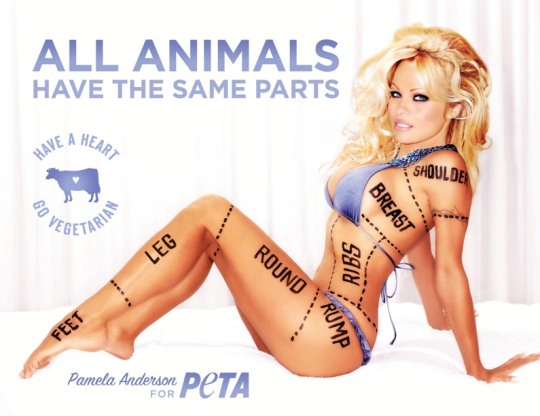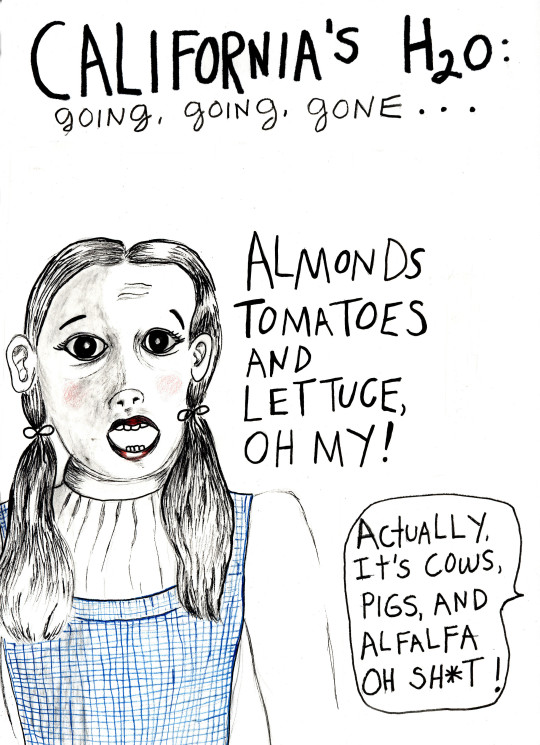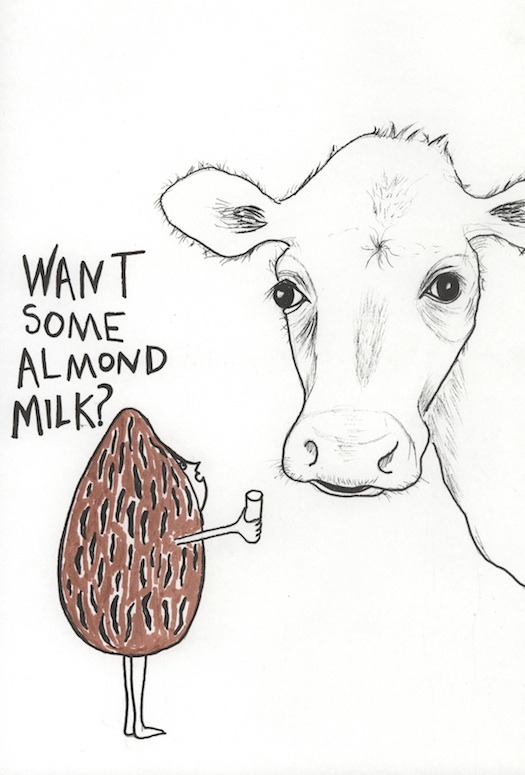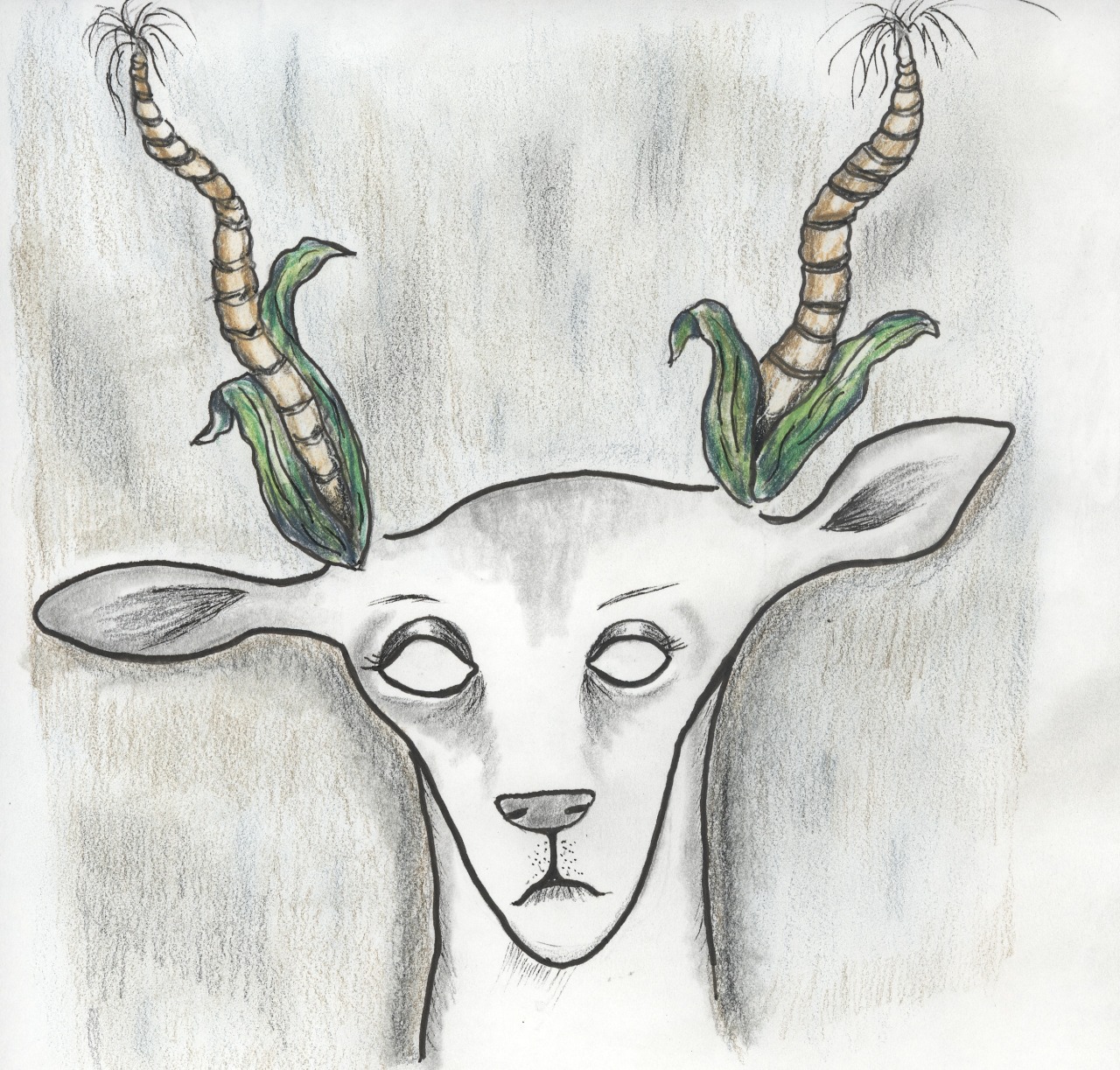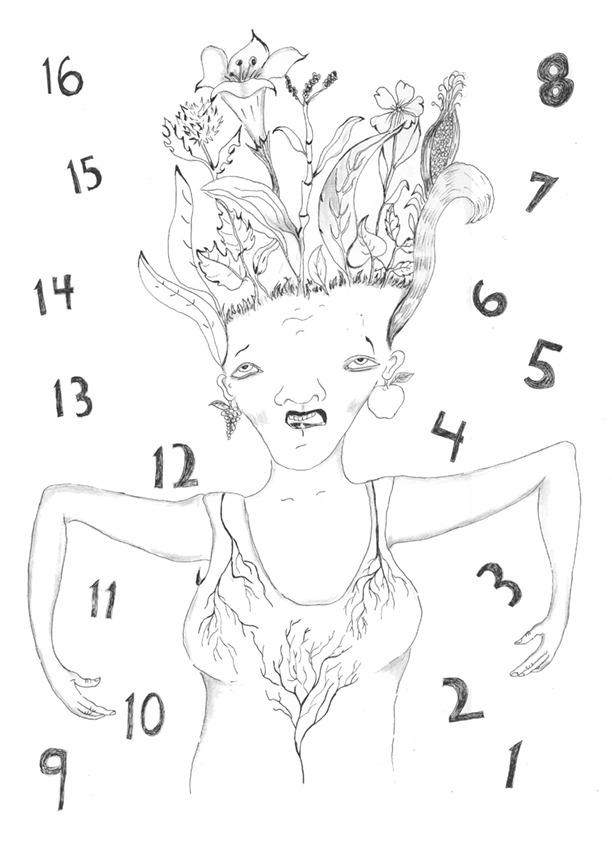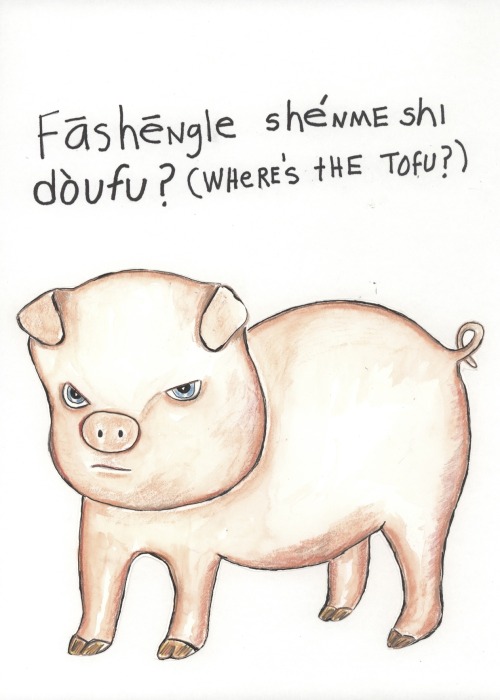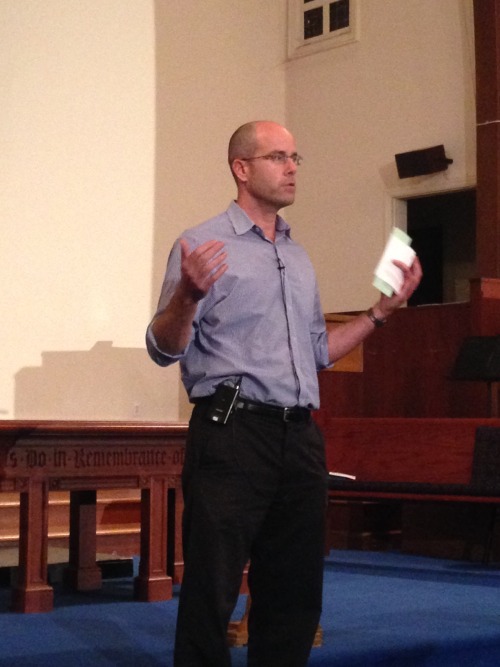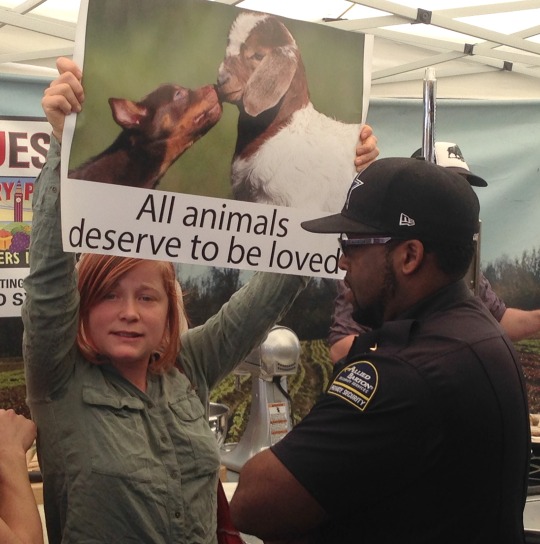
By Leslie Goldberg
We were at the annual Goat Festival in San Francisco to cause a disruption Saturday. Yup, this morning I wasn’t pecking at my keyboard spouting off about animal rights or about the environmental disaster caused by animal food consumption, but rather I took it to the streets with the animal rights groups DXE (Direct Action Everywhere) and BOAA (Berkeley Organization for Animal Advocacy).
The disruption was successful: By chanting (loudly) and holding up signs we managed to make it almost impossible to give a cooking goat sausage demonstration.
A small group of foodies had gathered under a tent in front of the Ferry Building to watch John Stewart-Streit show how to fry up the flesh of a goat and to also have some samples. Stewart-Streit owns a restaurant in Oakland that serves “house-butchered porcine delights.” The onlookers sat on folding chairs apparently unaware they were about to experience an animal rights protest up close and personal.
Security, on the other hand, was aware there was to be a disruption. There were about eight San Francisco police officers and private security guards standing around. The cops kept talking into their radios. The security officers seemed annoyed.
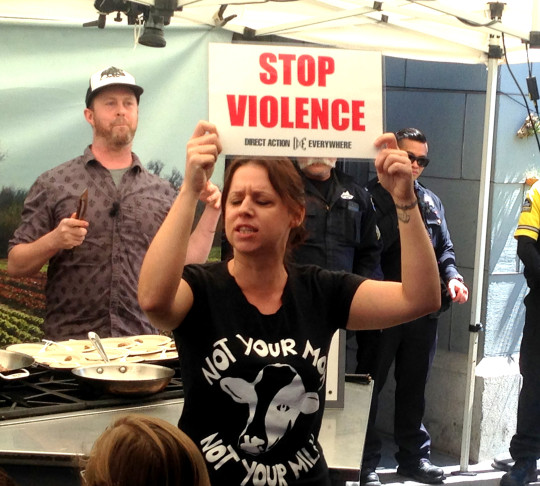
As the goat cooking demo got started and the chef started talking about the “pleasures” of goat consumption, one activist who had been sitting in the audience stood up, and holding a poster of a dog kissing a goat, faced the audience and explained (loudly) about how goats feel, suffer, experience joy and love their families just like us.
She was so strong and forceful, Stewart-Streit who had a microphone could not make himself heard above her. Then another activist stood up, also holding a poster and started shouting about the suffering of goats and yet another activist did the same.

Then a chant began with about 30 activists standing around the seating area. We whipped out our signs reading “Stop Violence” from under our shirts and from out of our bags.
It was loud. Yet, amazingly, for the most part, the audience just sat there. At first when individual activists were speaking there was laughter but later the expressions turned blank as they stared at us with our Stop Violence signs. Despite the intimacy (we were quite close) it was as if they were watching TV.
Also amazingly, they passively ate the sausage that was handed out from a big platter while the ruckus was going on. I have to say, I did see a few angry faces in the audience and heard one woman say, “We have rights too.”

I didn’t respond to her with what I would have liked: “Your rights end at a goat’s throat.” I’d been instructed not to engage with individuals, so I didn’t.
I’m a new member of DXE. I had trepidations about joining. I’d seen the group’s videos where they walk into grocery stores such as Whole Foods and/or restaurants such as Chipolte and start chanting, “It’s not food, it’s violence.” They hold up signs depicting either really cute and sweet animals frolicking in sanctuaries or depicting horrendous animal cruelty.
Is this the right tactic I wondered. Wouldn’t we succeed in simply pissing people off by getting in their faces like that? Why wouldn’t they decide that animal rights activists were just crazy assholes and vow never to stop eating animals?
Then I heard a short lecture from one of the DXE organizers a couple of weeks ago who explained that DXE wasn’t really about converting individuals but rather, impacting society as a whole and making the effort to get our message out into public consciousness.
He also said that DXE is firmly committed to non-violence and if members are asked to leave by the police they leave.
I decided, what the hell, maybe this will do something. Maybe this will stop the slaughter, save the environment and restore public health. My husband Michael and I joined.
Before our action we had gathered at an apartment where some of the DXE organizers live. There I was stunned to learn that a DXE protest at a circus in LA had gone very badly and that circus employees set on non-violent DXE members and beat them with flashlights. One of the DXE members who had been attacked and injured had also been arrested and charged with felony assault.
Oh god.
They had advertised the Goat Festival as a place to “bring the kids to play with adorable baby goats” and attend the “goat-themed cooking demo.”
What? Play with the goats and then turn around and eat sausage made from their flesh?
OK. We’ll go to the Goat Festival where they are eating goat flesh and secretions yards away from where they are playing with living, breathing goats. Our presence as animal rights activists will suggest, if nothing else, “There’s something really bizarre about this.”
The Goat Festival was also “Humane Meat Ground Zero.” The event was sponsored by the Center for Urban Education about Sustainable Agriculture. Folks troubled by the killing of animals for food could find some comfort in the belief that “Well, at least they had a good life.” And those worried about the environmental devastation caused by factory farms, could soothe their souls with the idea that the meat is “free range” and “sustainable.”
For this post all I want to say is “humane meat” and “sustainable meat” and “cage free” are advertising slogans aimed at people who have money and who care about animals. Those slogans are not the truth, folks. Undercover video of some of these “farms” are almost as gruesome as factory farm footage, but even when it’s nice and the animals are grazing in pastures, it’s not the whole story.
Why I’m not on board with the so-called humane meat or the humane dairy trip:
1) Killing animals and causing them pain, terror and suffering for trivial reasons like “It tastes good” or “Humans have always eaten meat” cannot be defended ethically even if a person paid three times the normal price for that meat or those eggs or those dairy products (yes, they brutally kill dairy cows and egg chickens for meat when they’re “spent.”)
2) Meat and dairy consumption is not “sustainable.” There is simply not enough land and not enough water on this earth to produce enough meat and dairy to feed everybody.
3) No matter how “food animals” are raised they cause planet-threatening pollution and planet-threatening green house gas.
If you still want to argue, write me a letter.
– A Vicious Vegan blog post –

